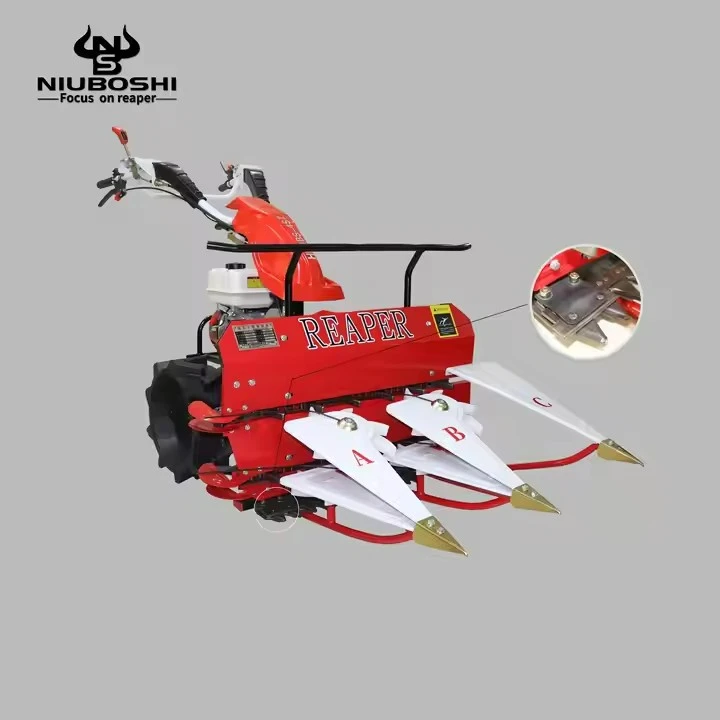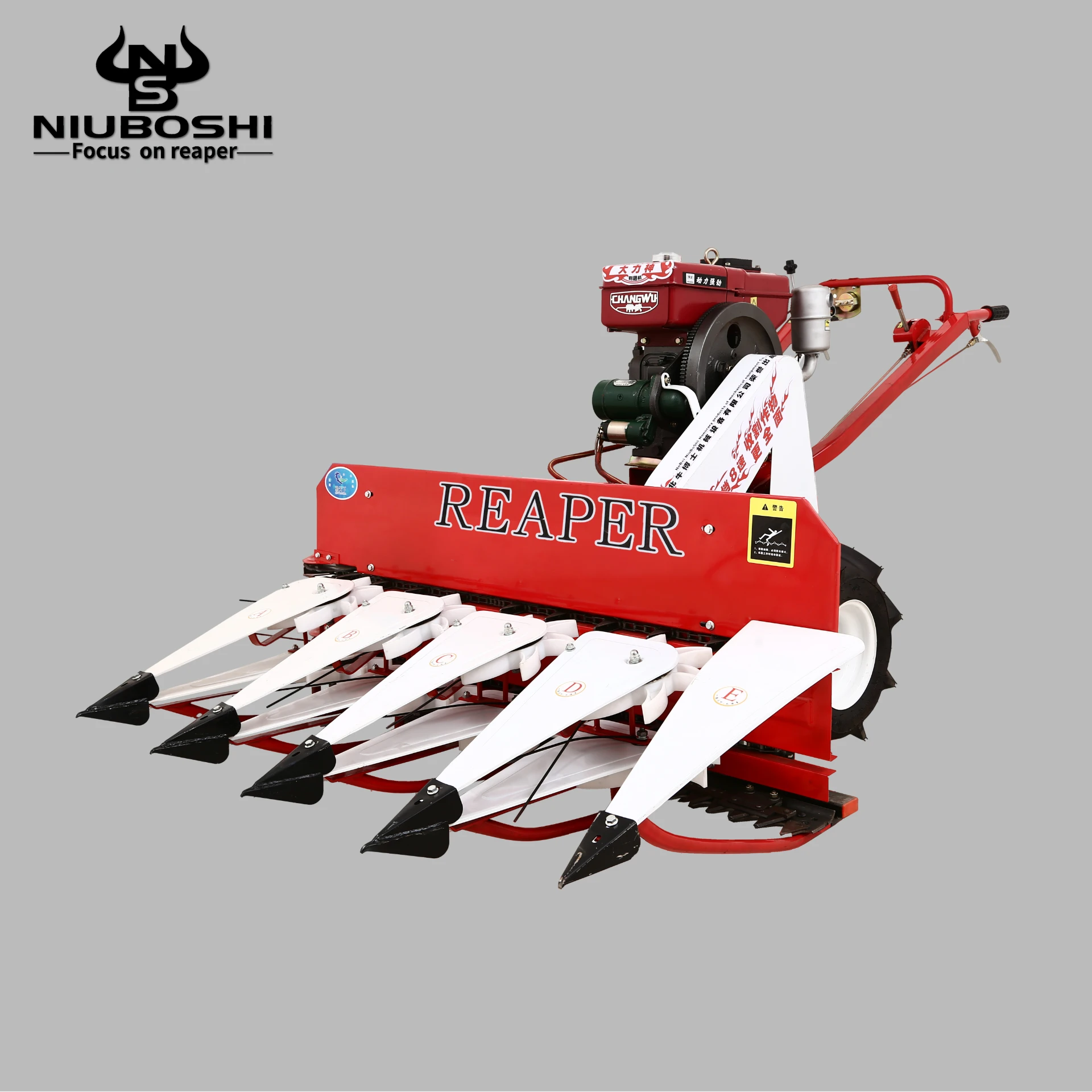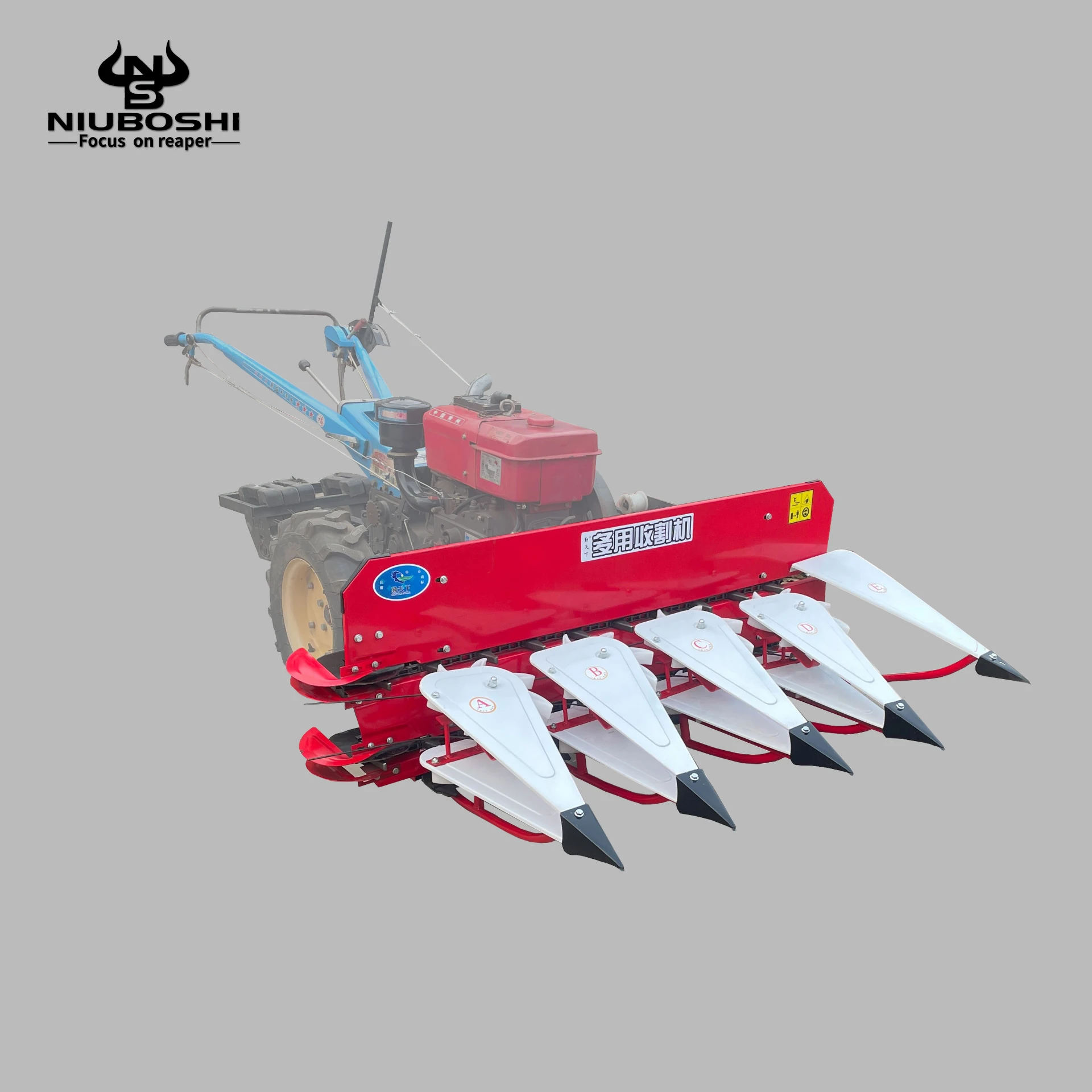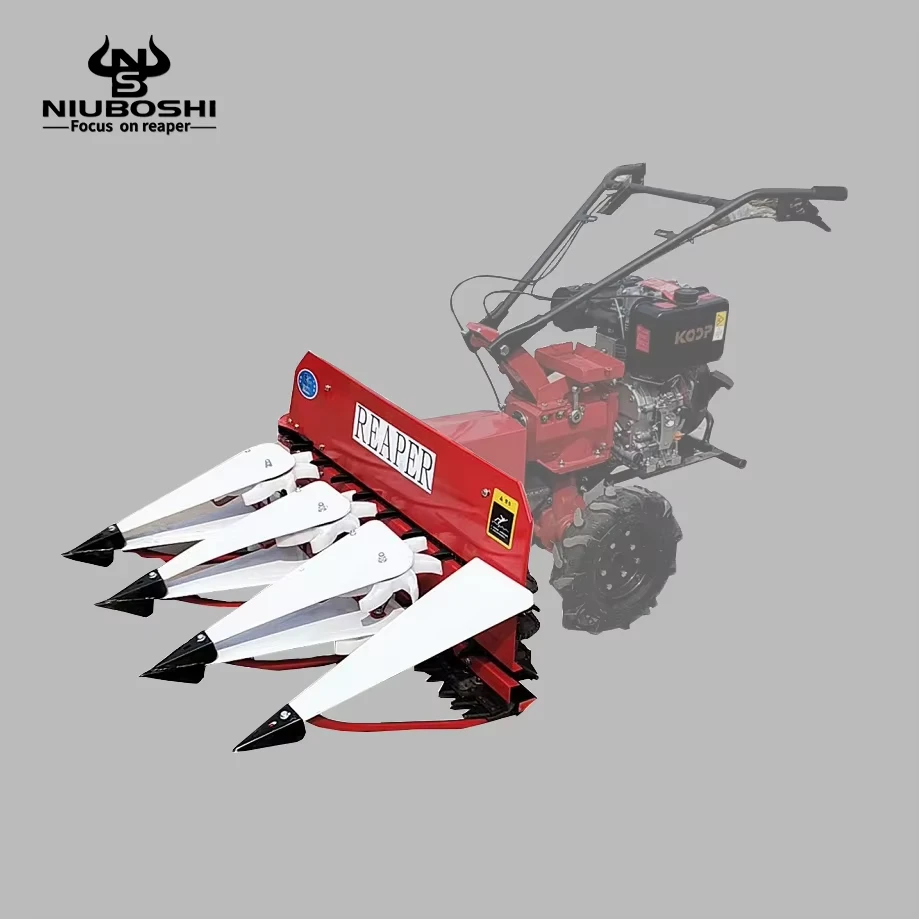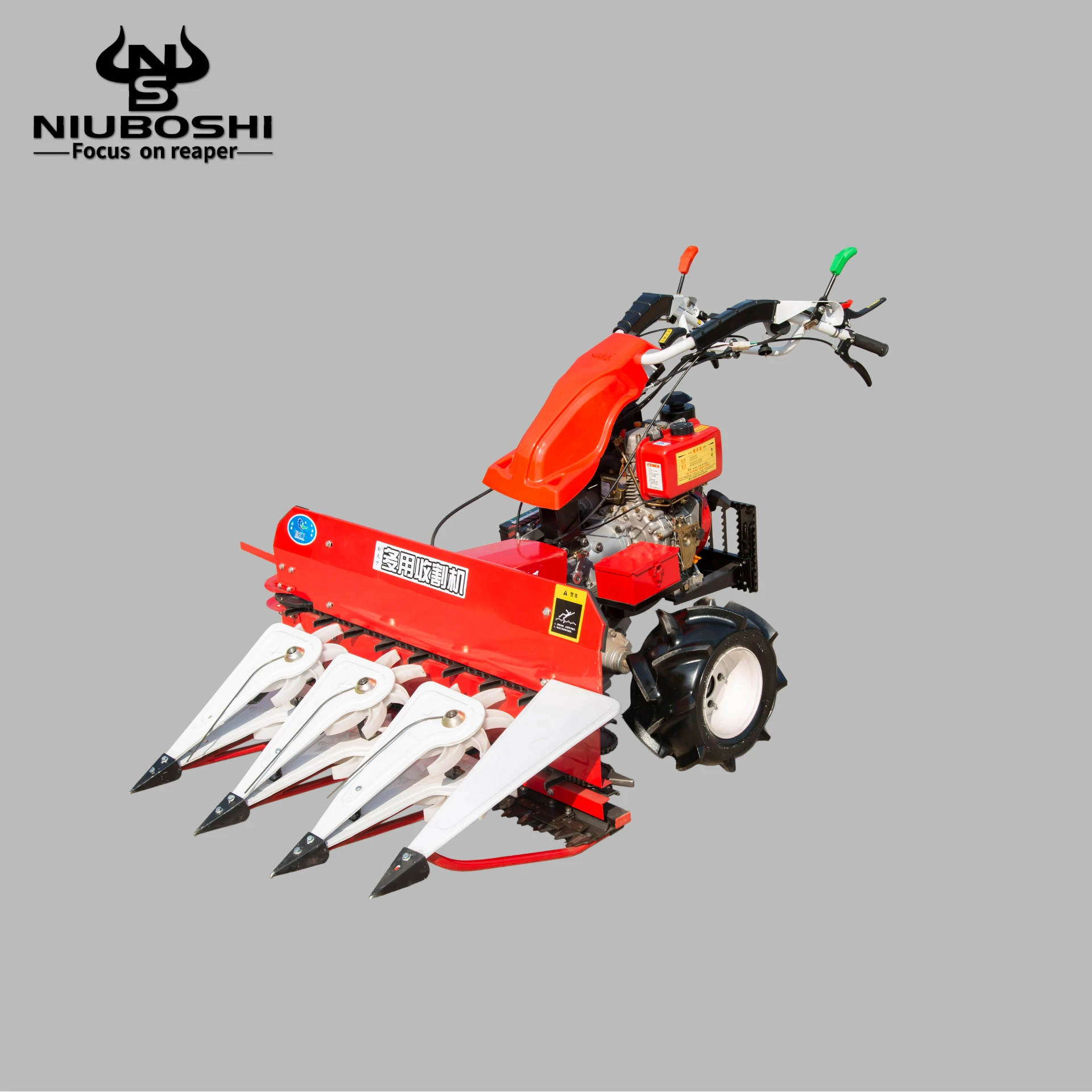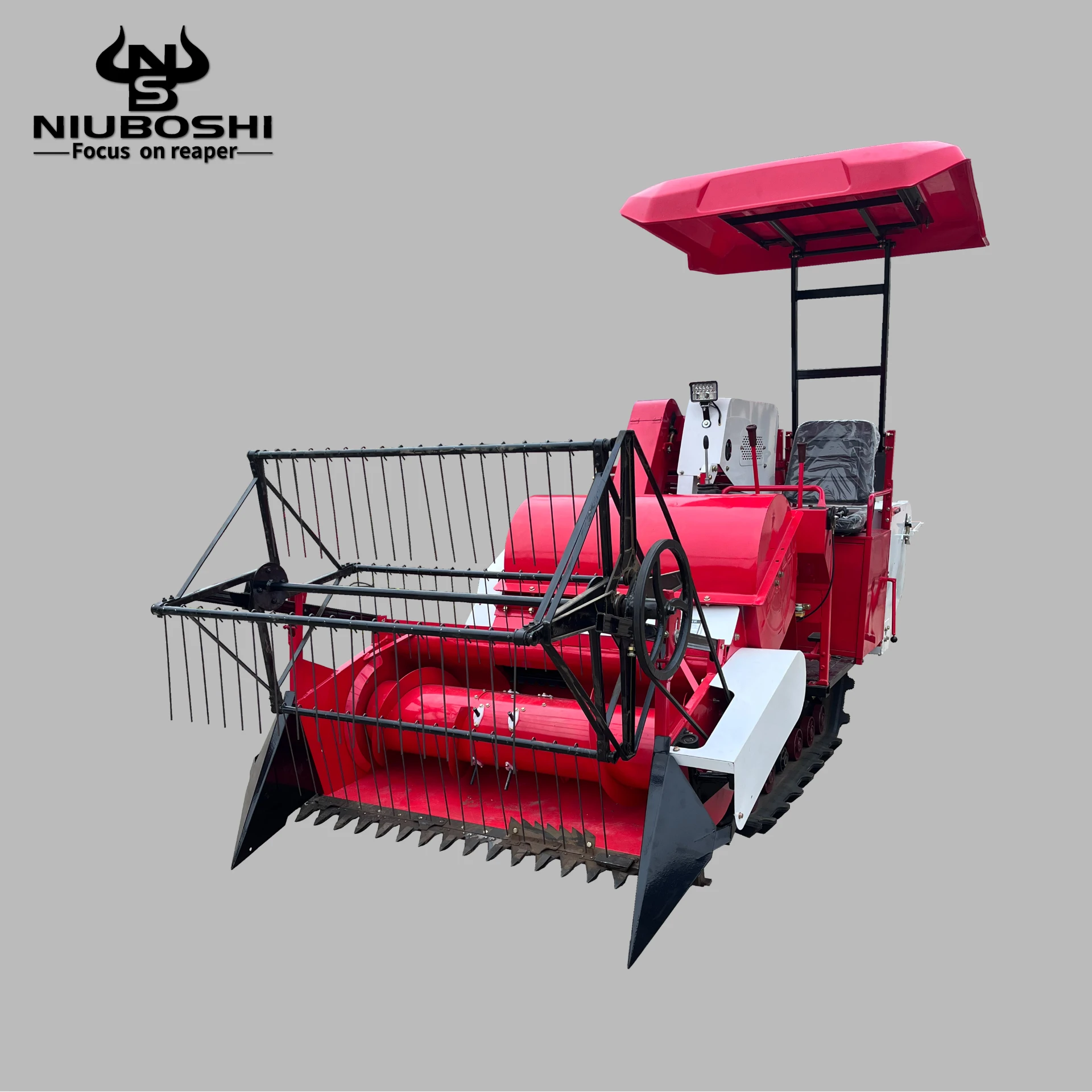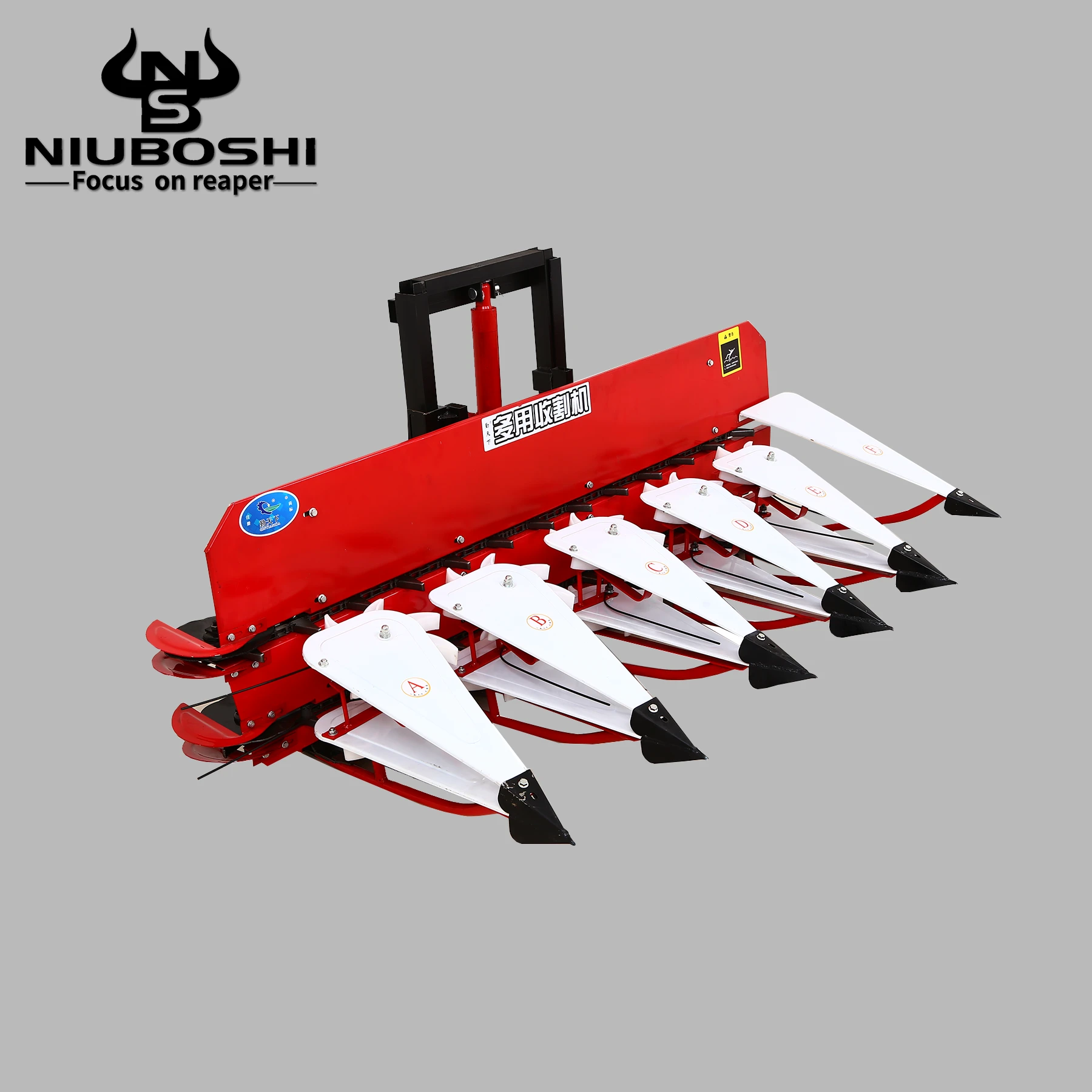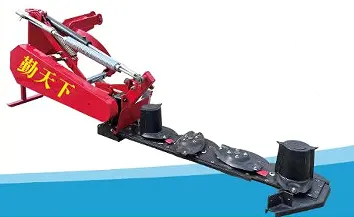Versatile Forage Mower: Hay, Maize, & Crop Harvesting
Understanding the Pivotal Role of Forage Harvesting in Modern Agriculture
In the intricate ecosystem of modern agriculture, the efficiency and quality of feed production directly correlate with livestock health, dairy yields, and ultimately, farm profitability. Central to this process is the crucial task of forage harvesting, a practice that has evolved significantly with technological advancements. The cornerstone of this evolution is sophisticated machinery, prominently featuring the forage mower. These specialized agricultural implements are engineered to cut and prepare various forage crops, such as alfalfa, clover, grasses, and silage maize, for subsequent drying, ensiling, or baling. The precise and clean cut provided by a high-quality forage mower minimizes crop loss, preserves nutritional value, and ensures a consistent feed supply, critical for animal welfare and productivity. Understanding the technological nuances, operational efficiencies, and application versatility of these machines is paramount for B2B stakeholders, including farm managers, agricultural equipment distributors, and research institutions. The demand for advanced forage harvesting solutions is driven by global trends in sustainable agriculture, the push for increased mechanization, and the continuous quest for higher yields and reduced operational costs. Manufacturers are responding with innovations that enhance cutting performance, reduce fuel consumption, improve operator comfort, and integrate smart farming capabilities, thereby transforming traditional harvesting practices into data-driven, highly optimized processes. This comprehensive analysis will delve into the multifaceted aspects of modern forage mowers, illustrating their impact on agricultural productivity and the future trajectory of feed production technology. From the foundational design principles to the integration of advanced materials and smart control systems, every element contributes to the overall effectiveness and economic viability of these indispensable machines.
The significance of a robust and efficient forage mower extends beyond mere cutting; it impacts the entire value chain of livestock farming. A well-designed machine ensures minimal contamination of the forage with soil or foreign objects, which can significantly affect animal health and milk quality. Furthermore, the speed and accuracy of the harvesting process directly influence the window of opportunity for cutting crops at their optimal nutritional stage, a fleeting period dictated by weather conditions and crop maturity. Delayed or inefficient harvesting can lead to substantial losses in dry matter and digestible nutrients. This critical timing underscores the need for dependable and high-performance equipment. Emerging trends in forage management, such as precision agriculture and vertical farming, also indirectly influence the design and capabilities of these mowers, demanding greater adaptability and precision. The global push for sustainability means that modern forage mowers are designed not only for performance but also for reduced environmental footprint, incorporating features that minimize soil compaction, optimize fuel efficiency, and reduce noise levels. These machines are increasingly integrated into broader farm management systems, utilizing GPS for field mapping, yield monitoring, and automated steering, transforming forage harvesting from a labor-intensive task into a highly automated, data-rich operation. This holistic approach ensures that every pass of the forage mower contributes to a more efficient, sustainable, and profitable agricultural enterprise. Manufacturers like Niuboshi are at the forefront of this innovation, delivering solutions that meet the complex demands of contemporary farming environments.
Industry Trends and Technological Advancements in Forage Harvesting
The agricultural machinery sector, particularly within forage harvesting, is experiencing a dynamic transformation driven by innovation and global demands. A prominent trend is the increasing adoption of smart farming technologies, where GPS guidance, telematics, and real-time data analytics are becoming standard features for advanced forage mower systems. These technologies enable precise field mapping, optimize cutting paths, and monitor yield and moisture content on the go, significantly enhancing efficiency and reducing operational costs. For instance, data collected from a forage plot harvester can be used to create variable-rate fertilizer application maps for the subsequent crop cycle, promoting sustainable resource management. Another significant trend is the focus on higher capacity and wider cutting widths, allowing farmers to cover more ground in less time, crucial for large-scale operations and tight harvesting windows. Manufacturers are also heavily investing in automation, with semi-autonomous and fully autonomous forage harvesters being developed and tested, promising to revolutionize labor management on farms. The drive for sustainability is pushing for more fuel-efficient engines, hybrid powertrains, and designs that minimize soil compaction, thereby preserving soil health and reducing environmental impact. Furthermore, there's a growing emphasis on modular designs and versatility, allowing a single base machine to be adapted for different forage types or harvesting conditions with interchangeable headers. This adaptability is particularly valuable for operators dealing with diverse crops like hay and maize, necessitating machines that can function as a versatile hay harvester or a dedicated maize harvester machine depending on the season and farm needs. The integration of advanced sensors for foreign object detection and prevention is also gaining traction, protecting both the machinery and the livestock from potential harm.
Beyond macro trends, specific technological advancements are reshaping the performance and reliability of the modern forage mower. Improved cutting mechanisms, such as disc mowers with faster blade speeds and enhanced cutting angles, are leading to cleaner cuts and reduced power requirements. Innovations in conditioning systems, including roller conditioners and flail conditioners, are designed to accelerate the drying process of cut forage, crucial for preserving nutrient quality and preventing spoilage. For instance, a well-designed conditioner on a hay harvester can reduce drying time by up to 30%, significantly mitigating weather risks. The material science applied to blades and other wear parts is also advancing, with manufacturers utilizing hardened steel alloys and carbide coatings to extend component lifespan, reduce maintenance downtime, and lower long-term operating costs. Transmission systems are becoming more robust and efficient, often incorporating hydrostatic drives for smoother operation and precise speed control, which is vital when operating a heavy maize harvester machine in challenging terrain. The ergonomics of operator cabins are also receiving significant attention, with features like climate control, intuitive control interfaces, and reduced noise and vibration levels aimed at improving operator comfort and reducing fatigue during long working hours. The development of compact yet powerful machines, such as the mini maize harvester machine, addresses the needs of smaller farms or those with specific plot sizes, offering high performance in a more agile footprint. These localized innovations collectively contribute to a global improvement in agricultural productivity, making forage harvesting more efficient, cost-effective, and environmentally conscious.
Introducing the Niuboshi Disc Mower: Precision and Durability for Forage Harvesting
The Niuboshi Disc Mower stands as a testament to engineering excellence in the realm of agricultural machinery, specifically designed to meet the demanding requirements of modern forage harvesting. As a leading solution in the market, this disc mower embodies a perfect synergy of high-quality materials, advanced manufacturing processes, and user-centric design, providing unmatched performance for cutting various forage crops. Unlike conventional reciprocating mowers, the Niuboshi Disc Mower utilizes rapidly rotating discs, each equipped with multiple sharp blades, to achieve a clean, swift, and highly efficient cut. This cutting mechanism drastically reduces clogging, especially in dense or lodged crops, ensuring continuous operation and minimal downtime. Its robust construction is specifically engineered to withstand the rigorous conditions of agricultural environments, from uneven terrain to varying crop densities. The design prioritizes minimal ground contact, which reduces soil contamination in the forage and extends the lifespan of the blades and other wear parts. This meticulous attention to detail in design and manufacturing directly translates into significant operational advantages for farmers: reduced fuel consumption per hectare due to optimized power transmission, lower maintenance costs thanks to durable components, and superior forage quality because of the clean cutting action that minimizes leaf shatter and preserves nutrient integrity. The Niuboshi Disc Mower is not just a piece of equipment; it's an investment in sustainable agricultural practices, offering a pathway to increased productivity and profitability for diverse farming operations, from small to large-scale livestock farms.
Key features of the Niuboshi Disc Mower that set it apart in the competitive landscape of forage mower technology include its innovative suspension system, which allows the cutting unit to float independently over contours, ensuring a consistent stubble height and preventing scalping even on undulating fields. This feature is particularly beneficial for preserving the regrowth potential of perennial forage crops like alfalfa. The quick-change blade system is another significant advantage, enabling operators to replace worn blades rapidly in the field, thereby minimizing precious downtime during critical harvesting periods. Safety is also paramount in its design, incorporating robust stone guards and break-away systems that protect the mower from damage upon impact with obstacles, ensuring both operator safety and the longevity of the machine. The power transmission system is engineered for maximum efficiency, delivering consistent power to the cutting discs while minimizing energy loss, contributing directly to lower fuel consumption. Furthermore, the Niuboshi Disc Mower is designed for ease of attachment and detachment from various tractor models, offering versatility and convenience for farm operations that utilize a fleet of machinery. Its compact transport position makes it easy to maneuver on narrow roads and store efficiently. With a focus on longevity, performance, and user convenience, the Niuboshi Disc Mower represents a sophisticated solution for modern forage management, embodying the reliability and innovation that Niuboshi is renowned for in the agricultural machinery sector.
Technical Parameters and Performance Specifications of Advanced Forage Mowers
Understanding the technical parameters of a forage mower is crucial for making informed purchasing decisions and optimizing its operational efficiency. These specifications dictate a machine's compatibility with existing farm equipment, its capacity, performance under various conditions, and overall return on investment. Key parameters include working width, which directly impacts the area covered per hour, typically ranging from 1.6 meters for smaller models to over 10 meters for large-scale professional harvesters. The number of discs and blades per disc is also critical, influencing the cutting quality and speed; more discs and blades generally mean a finer, more consistent cut. Power requirement, usually expressed in horsepower (HP), indicates the minimum tractor power needed to operate the mower effectively. This figure is vital for matching the mower to an appropriate tractor, ensuring efficient power transfer without overloading the prime mover. Driveline protection mechanisms, such as shear bolts or slip clutches, are essential safety features that protect the mower and tractor from sudden impacts or overloads. Furthermore, the transport width and height are practical considerations for road travel and storage. For disc mowers, the speed of the disc rotation, often around 3000 RPM, combined with the cutting height adjustment range (typically 30-80mm), determines the quality of the stubble and the subsequent regrowth of the forage. The weight of the machine is also important, affecting soil compaction and maneuverability, especially on soft ground. Manufacturers provide detailed specification sheets that allow potential buyers to compare models based on these critical parameters, ensuring the chosen machine aligns perfectly with their specific operational needs and agricultural scale.
Beyond basic specifications, advanced parameters delve into the performance and durability aspects of a modern forage mower. These include the material specifications of the cutting blades (e.g., heat-treated boron steel for enhanced wear resistance), the type of cutter bar (e.g., modular versus conventional gear drive), and the design of the suspension system (e.g., hydraulic or spring-loaded floatation for ground contour following). Fuel efficiency, often measured in liters per hectare, is a significant economic factor, reflecting the machine's optimized power consumption. Noise levels, measured in decibels, are increasingly important for operator comfort and compliance with environmental regulations. Maintenance requirements, including grease points, blade change complexity, and access to wear parts, directly influence operational costs and uptime. For machines designed for specific crops, such as a maize harvester machine, parameters like the number of rows harvested simultaneously, kernel processor type (if integrated), and chop length adjustability become paramount. Similarly, for a forage plot harvester or a hay harvester, the presence and type of conditioner (flail, roller, or tine) and its adjustability for varying crop conditions are critical for accelerating drying. The structural integrity, often verified through FEA (Finite Element Analysis) during design, ensures the machine's longevity under stress. Understanding these detailed parameters allows B2B decision-makers to conduct a thorough technical evaluation, comparing not just initial purchase price but also long-term operational costs, reliability, and the potential for enhanced productivity.
| Parameter | Description | Typical Range/Value | Impact on Performance |
|---|---|---|---|
| Working Width | Effective cutting width in a single pass. | 1.6m - 10.0m+ | Directly affects area covered per hour; higher width = faster harvesting. |
| Number of Discs | Total number of rotating discs on the cutterbar. | 4 - 10 discs (for common sizes) | More discs generally mean smoother cutting and higher capacity. |
| Blades per Disc | Number of cutting blades attached to each disc. | 2-3 blades | Influences cutting quality and ability to handle dense crops. |
| Required PTO HP | Minimum tractor Power Take-Off horsepower required. | 40 HP - 200+ HP | Ensures adequate power for efficient and reliable operation. |
| Cutting Height Range | Adjustable range for the height of the cut stubble. | 30mm - 80mm | Critical for crop regrowth, minimizing soil contamination. |
| Disc Speed | Rotational speed of the cutting discs. | ~3000 RPM (at 540 PTO RPM) | Higher speed promotes cleaner cuts and better material flow. |
| Weight (Approx.) | Overall mass of the mower. | 400 kg - 2500 kg+ | Impacts soil compaction, stability, and tractor compatibility. |
| Transport Width/Height | Dimensions for transport on roads or through narrow passages. | 1.5m-3.0m / 3.0m-4.0m | Crucial for logistics, safety, and regulatory compliance. |
| Conditioner Type (Optional) | Mechanism to crimp or bruise forage for faster drying. | Flail, Roller (Rubber/Steel) | Accelerates drying, crucial for hay production, preserves nutrients. |
Manufacturing Excellence: The Craftsmanship Behind Niuboshi Disc Mowers
The superior performance and enduring reliability of the Niuboshi Disc Mower are rooted in a meticulously engineered manufacturing process that adheres to the highest industry standards. This process begins with the selection of premium-grade materials, specifically chosen for their metallurgical properties suited to the extreme stresses of agricultural operations. High-strength steel alloys, often reinforced with elements like boron or manganese, are primarily used for critical components such as the cutter bar housing, gears, and disc plates. These materials undergo stringent quality checks upon arrival, including spectrographic analysis to confirm alloy composition and mechanical testing for tensile strength and hardness. The manufacturing journey of a Niuboshi forage mower is a testament to precision engineering, incorporating a multi-stage process flow to ensure every component meets exact specifications. This includes advanced forming techniques, such as precision casting for complex gearbox housings, which ensures structural integrity and dimensional accuracy, followed by state-of-the-art forging for components like the drive shafts and universal joints, which are then heat-treated to achieve optimal hardness and fatigue resistance. For the cutter bar, critical machining operations, including CNC (Computer Numerical Control) machining, ensure extremely tight tolerances for bore alignment and surface finish, crucial for smooth operation and minimal vibration at high rotational speeds. Welding processes, such as robotic MIG/MAG welding, are employed for structural assemblies, providing consistent, high-strength joints that withstand dynamic loads during operation. Each manufacturing stage is monitored against rigorous internal quality control standards, far exceeding basic industry benchmarks.
The commitment to quality at Niuboshi extends to every facet of production, reinforced by adherence to international inspection standards such as ISO 9001 for quality management systems and ANSI/ASAE standards for agricultural machinery safety and performance. These certifications are not merely badges but reflect an embedded culture of continuous improvement and defect prevention. For critical rotating parts, dynamic balancing is performed to minimize vibration and extend bearing life. Non-destructive testing (NDT) methods, including ultrasonic testing and magnetic particle inspection, are regularly used on critical welds and castings to detect any subsurface imperfections before assembly. Every finished Niuboshi Disc Mower undergoes comprehensive functional testing, including PTO speed compatibility, cutter bar run-out, and overall structural integrity under simulated load conditions. This rigorous testing protocol ensures that each machine leaving the factory is ready for immediate deployment and capable of delivering its advertised performance parameters consistently. The estimated service life of a Niuboshi forage mower is designed to exceed industry averages, typically ranging from 10 to 15 years under regular use and proper maintenance, a testament to the durability derived from superior materials and meticulous manufacturing. While traditionally agricultural, the robust manufacturing processes employed by Niuboshi are indicative of techniques used across demanding sectors, such as heavy machinery manufacturing and precision engineering industries, where reliability and longevity are paramount. In typical agricultural application scenarios, the Niuboshi Disc Mower’s precise manufacturing advantages translate into tangible benefits: significantly reduced energy consumption due to optimized power transmission and minimal friction, enhanced corrosion resistance through advanced coating technologies and material selection, and superior operational uptime, directly contributing to the farmer's bottom line by maximizing productive hours and minimizing costly repairs.
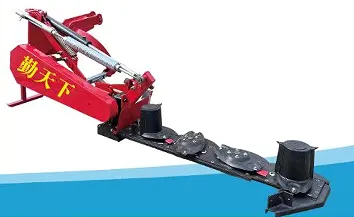
Diverse Application Scenarios and Versatility of Modern Forage Mowers
The versatility of a modern forage mower is a critical factor for its widespread adoption across various agricultural landscapes and farming models. These machines are not limited to a single crop or farm size; rather, their adaptability allows them to be the backbone of feed production in diverse environments. For large-scale dairy operations and beef cattle ranches, high-capacity disc mowers with wide working widths are essential for efficiently harvesting vast expanses of alfalfa, clover, and mixed grass pastures. Their ability to cover significant acreage rapidly ensures that large volumes of forage are cut at optimal maturity, preserving maximum nutritional value. In contrast, smaller farms or those focused on specialized livestock, such as sheep or goats, might opt for a more compact yet equally efficient forage plot harvester, which offers maneuverability in smaller fields and around obstacles. Beyond traditional hay and silage production, these mowers are also indispensable for renewable energy projects, where biomass crops like switchgrass or miscanthus are harvested for biofuel or bioenergy production. The robust design of these mowers allows them to handle tough, fibrous biomass crops that would challenge less durable equipment.
Moreover, the adaptability of modern forage harvesting equipment extends to seasonal variations and crop-specific requirements. For instance, a dedicated maize harvester machine is engineered to handle the unique challenges of chopping silage maize, which requires a powerful chopping mechanism and specialized headers to process the thick stalks and cobs. The versatility of some disc mowers allows them to be fitted with conditioners, transforming them into a highly effective hay harvester that accelerates the drying process, crucial for producing high-quality dry hay in regions with unpredictable weather. The emergence of the mini maize harvester machine caters specifically to smallholder farmers or those with fragmented land parcels, offering an economical yet efficient solution for their silage needs without the prohibitive cost or size of a full-scale machine. Furthermore, forage mowers are increasingly used in conservation agriculture, such as cover crop termination, where they precisely cut down cover crops to return organic matter to the soil, improving soil health and reducing erosion. Their role in managing pasturelands, including topping to encourage new growth and control weeds, is also significant. The continuous innovation in design and engineering ensures that the modern forage mower remains an indispensable tool for enhancing productivity, optimizing resource utilization, and supporting diverse agricultural practices globally. The Niuboshi Disc Mower, with its robust design and adaptable features, epitomizes this versatility, offering a reliable solution across this broad spectrum of applications.
Technical Advantages and Performance Metrics of Niuboshi Disc Mowers
The Niuboshi Disc Mower distinguishes itself in the highly competitive agricultural machinery market through a suite of technical advantages that directly translate into superior performance, enhanced efficiency, and long-term cost savings for operators. One of its primary technical strengths lies in its advanced cutter bar design, featuring precisely engineered gear drives that ensure smooth, quiet, and consistent power transmission to each disc. This meticulous design minimizes energy loss, leading to remarkable fuel efficiency, a critical factor in reducing operational expenses. The high rotational speed of the cutting discs, combined with free-swinging blades made from specially hardened, wear-resistant steel, ensures an exceptionally clean and uniform cut, even in dense or lodged crops. This clean cut minimizes plant damage, which is crucial for maximizing the nutritional content and palatability of the harvested forage, directly impacting livestock performance. Furthermore, the low-profile cutter bar design allows for cutting closer to the ground without incorporating excessive soil, thereby reducing ash content in the forage and extending the lifespan of subsequent processing machinery like balers or choppers.
Another significant technical advantage is the Niuboshi Disc Mower's robust suspension system, often incorporating hydraulic or spring-loaded flotation, which allows the cutter bar to closely follow ground contours. This feature is paramount for preventing scalping on uneven terrain, protecting the underlying soil, and ensuring consistent stubble height across the entire field. This meticulous ground following capability also contributes to the longevity of the machine by minimizing impacts. The quick-change blade system, a user-centric innovation, drastically reduces the time required for blade replacement, enabling farmers to maximize their operational windows, especially during critical harvesting periods when weather conditions are unpredictable. Safety features are integrated throughout the design, including an automatic break-away system that allows the cutter bar to swing back upon impact with an obstacle, protecting the machine from damage and resuming working position automatically. The sealed, oil-bathed gearboxes provide superior lubrication and protection for internal components, significantly extending the lifespan of the drive system and reducing maintenance frequency. Compared to traditional reciprocating mowers or older disc mower designs, the Niuboshi Disc Mower exhibits significantly higher working speeds and superior throughput, measured in hectares per hour (ha/hr), directly contributing to increased productivity. Its durability is further evidenced by its low vibration levels during operation, which reduces wear on components and enhances operator comfort. These combined technical advantages make the Niuboshi Disc Mower a highly reliable, efficient, and cost-effective solution for any serious agricultural operation in need of a high-performance forage mower.
Competitive Landscape: Forage Mower Manufacturer Comparison
The market for forage mower technology is highly competitive, populated by a range of global and regional manufacturers, each offering distinct advantages in terms of features, pricing, and specialized applications. Key players include established giants like John Deere, CLAAS, Krone, Kuhn, and New Holland, alongside emerging innovators and specialized manufacturers such as Niuboshi. These companies differentiate themselves through various strategies, including technological leadership, market segment focus (e.g., small-scale versus large-scale farming), after-sales service networks, and price competitiveness. John Deere and CLAAS, for instance, are renowned for their integrated farm solutions, offering a broad spectrum of high-end, technologically advanced machinery, often incorporating proprietary precision agriculture systems. Their forage plot harvester and maize harvester machine lines typically feature sophisticated automation, telematics, and high horsepower options, appealing to large commercial farming enterprises that prioritize peak performance and data integration. However, their premium features often come with a higher price point. Krone and Kuhn, on the other hand, are highly specialized in hay and forage equipment, recognized for their robust construction, innovative conditioning systems for hay harvester models, and dedication to research and development in cutting and conditioning technologies. New Holland provides a balanced portfolio, offering reliable and versatile options that cater to a wide range of farm sizes and budgets, often emphasizing ease of use and maintenance.
Niuboshi carves its niche in this competitive landscape by focusing on delivering exceptional value through a combination of robust engineering, material quality, and accessible pricing, particularly with its Niuboshi Disc Mower. While global leaders might offer extensive smart farming suites, Niuboshi excels in providing core performance, durability, and efficiency without unnecessary complexities, making it an ideal choice for operations seeking reliable, high-performing equipment with a strong return on investment. For example, a Niuboshi Disc Mower might offer comparable cutting quality and lifespan to higher-priced alternatives due to its meticulous manufacturing processes (as detailed previously), but at a more favorable acquisition cost. This makes Niuboshi particularly attractive to medium-sized farms, agricultural contractors, and emerging markets where cost-effectiveness combined with performance is paramount. Regional manufacturers often specialize in specific local crop conditions or farm sizes, sometimes offering unique solutions like a compact mini maize harvester machine tailored to smaller fields or challenging terrains. When evaluating different manufacturers, B2B buyers must consider not only the upfront cost but also long-term operational expenses, including fuel efficiency, maintenance requirements, parts availability, and resale value. The commitment to customer support and spare parts availability also varies significantly among manufacturers, impacting overall uptime and the total cost of ownership. The table below offers a comparative overview of key attributes across different manufacturer offerings, helping to highlight Niuboshi's strategic positioning within the market.
| Manufacturer | Key Strengths | Typical Price Segment | Technology Focus | Niuboshi Comparison (Relative) |
|---|---|---|---|---|
| John Deere / CLAAS | Full-line farm solutions, advanced precision ag tech, global support. | Premium/High | Automation, Telematics, Integrated Systems, High Capacity. | Higher initial investment, but extensive tech suites. Niuboshi offers focused, cost-effective performance. |
| Krone / Kuhn | Specialized forage equipment, robust build quality, innovative conditioners. | Mid-High | Cutting/Conditioning Efficiency, Durability, PTO-driven solutions. | Strong direct competitors in forage specialization. Niuboshi competes favorably on price-to-performance ratio for disc mowers. |
| New Holland | Versatile range, user-friendly designs, good balance of features and price. | Mid | Ergonomics, Fuel Efficiency, Wide Model Range. | Similar market segment. Niuboshi emphasizes specific disc mower durability and cutting precision. |
| Niuboshi | Exceptional manufacturing quality, robust materials, optimized performance, cost-effectiveness. | Mid-Low to Mid | Durability, Clean Cut, Low Maintenance, Fuel Efficiency (for disc mowers). | Offers premium features and build quality comparable to higher-end models at a more competitive price point. Strong ROI. |
Customized Solutions and Tailored Implementations for Forage Harvesting Needs
Recognizing the diverse and often unique requirements of modern agricultural operations, manufacturers of advanced forage mower systems increasingly offer customized solutions and tailored implementations. This bespoke approach ensures that the machinery perfectly aligns with specific farm sizes, crop types, terrain conditions, and existing equipment fleets, thereby maximizing efficiency and return on investment. Customization can range from specific working widths that match field dimensions for optimal pass efficiency, to specialized hitching mechanisms for non-standard tractor connections. For farms in hilly regions, options for enhanced ground contour following systems, such as advanced hydraulic floatation, might be recommended to prevent scalping and ensure consistent cutting. For operations focused on specific forage products, such as ensiling high-moisture maize, a maize harvester machine might be equipped with a specialized kernel processor, or a hay harvester could be configured with a more aggressive conditioning system optimized for rapid drying in humid climates.
Niuboshi understands that a one-size-fits-all approach is often insufficient in modern agriculture. While the core Niuboshi Disc Mower offers robust standard features, the company provides consultation services to identify and implement suitable adaptations. This might involve recommending specific blade types for abrasive soil conditions, alternative driveline configurations for higher PTO input capabilities, or specialized safety guards for operations in areas with unique regulatory requirements. For larger commercial clients or agricultural cooperatives, integration into existing fleet management systems through telematics modules can be facilitated, allowing for real-time monitoring of performance, fuel consumption, and maintenance alerts. The ability to customize also extends to the choice of tires or wheels for trailed models, where different flotation characteristics are needed for varying soil types to minimize compaction. Furthermore, for specialized research or experimental farms, even a mini maize harvester machine can be adapted with additional sensors for precise yield mapping or experimental cutting height adjustments. This level of customization ensures that whether a client needs a high-capacity solution for thousands of acres or a precise forage plot harvester for targeted research, the optimal configuration can be achieved, leading to unparalleled operational efficiency and longevity of the equipment. Niuboshi's engineering team works closely with clients to understand their specific challenges and translate them into practical, effective machinery solutions, underscoring our commitment to partnership and tailored excellence.
Real-World Application Cases and Success Stories with Niuboshi Forage Mowers
The true measure of a forage mower's value lies in its proven performance in real-world agricultural settings. Niuboshi has a growing portfolio of successful application cases across various regions and farm types, demonstrating the practical benefits and return on investment delivered by its Disc Mowers.
Case Study 1: Large-Scale Dairy Farm in the Midwest, USA
A prominent dairy farm in Wisconsin, managing over 2,500 acres of alfalfa and mixed grasses, faced challenges with consistent cutting quality and machine downtime using their previous forage mowers. They transitioned to a fleet of three Niuboshi Disc Mowers (2.8m working width models). The immediate impact was a noticeable improvement in cutting efficiency and forage quality. According to Mr. John M., the farm manager, "Our previous mowers struggled with dense stands and often left uneven stubble, leading to reduced regrowth. With the Niuboshi mowers, we've seen a remarkably clean cut across our fields, even in lodged crops. This has not only improved our first-cut yield by an estimated 5-7% but also promoted healthier regrowth for subsequent cuttings, effectively adding a 'bonus' cut over the season." The farm also reported a significant reduction in maintenance hours, noting the Niuboshi mowers' robust build and quick-change blade system as key factors. The farm’s operational data showed a 15% reduction in fuel consumption per harvested acre compared to their older machines, contributing directly to their bottom line and aligning with their sustainability goals. This success story highlights the Niuboshi Disc Mower's capability to perform under high-demand, large-scale conditions, delivering both economic and agronomic benefits.
Case Study 2: Smallholder Cooperative in Southeast Asia
In a region characterized by fragmented land parcels and the need for versatile equipment, a farmers' cooperative in Vietnam invested in a compact Niuboshi Disc Mower (1.8m working width) primarily for harvesting napier grass and local fodder crops. Before this acquisition, manual labor or older, less efficient machinery led to slow harvesting times and significant post-harvest losses. The introduction of the Niuboshi mower revolutionized their feed production. "The simplicity and reliability of the Niuboshi mower are perfect for our needs," states Ms. Lien H., a representative of the cooperative. "It's easy to attach to our standard tractors, and the cutting speed allows us to harvest our plots much faster, often before unexpected rains. This means more consistent feed for our livestock and less wastage." The clean cut also improved the palatability of the forage, leading to better feed intake by their cattle. The cooperative experienced a 20% increase in effective forage utilization, directly contributing to improved livestock health and milk production, demonstrating the transformative impact of even a smaller capacity Niuboshi forage mower in diverse agricultural contexts.
Case Study 3: Agricultural Research Facility in Europe
A leading agricultural research institute in Germany, conducting studies on new forage varieties and cutting techniques, required a highly precise and reliable forage plot harvester. They selected a Niuboshi Disc Mower for its renowned cutting accuracy and consistent performance. Dr. Klaus S., head of the forage research department, commented, "For our experimental plots, consistency in cutting height and minimal crop disturbance is paramount for accurate data collection. The Niuboshi Disc Mower provides unparalleled precision, allowing us to maintain exact stubble heights across varying test plots, which is critical for measuring regrowth rates and yield responses accurately. Its robust build also ensures reliable operation through our demanding research schedules." The low maintenance and high uptime of the Niuboshi mower allowed the institute to focus more on their research objectives rather than equipment downtime, showcasing its suitability not only for commercial farming but also for scientific applications demanding precision and reliability. These diverse application cases underscore Niuboshi's capability to deliver value across different scales and specialized requirements, cementing its reputation as a trusted partner in forage harvesting technology.
Ensuring Trust and Reliability: Niuboshi's Commitment to Quality and Support
In the B2B sector, trust and reliability are not merely desirable attributes but fundamental pillars upon which lasting partnerships are built. Niuboshi’s commitment to these principles is embedded in every stage of its operations, from product design and manufacturing to customer service and after-sales support. Our adherence to stringent international certifications, such as ISO 9001:2015 for Quality Management Systems and CE marking for European market compliance, is a testament to our dedication to producing products that meet and exceed global safety and quality benchmarks. These certifications validate our systematic approach to quality control, ensuring that every Niuboshi Disc Mower is manufactured with precision and consistency. With over 20 years of experience in agricultural machinery manufacturing, Niuboshi has cultivated a deep understanding of customer needs and operational challenges in diverse farming environments. Our extensive service network, comprising authorized dealers and service centers, ensures that expert technical assistance and genuine spare parts are readily available, minimizing downtime for our clients. The relationships we build with our customers are long-term partnerships, reflected in our proactive customer feedback integration into product development and continuous improvement initiatives.
To further solidify this trust, Niuboshi offers comprehensive support services, including transparent delivery schedules and robust warranty commitments. Our standard delivery cycle for a Niuboshi Disc Mower typically ranges from 4 to 6 weeks from order confirmation, depending on customization requirements and shipping destination, with expedited options available upon request for urgent operational needs. Each Niuboshi Disc Mower comes with a standard 12-month or 1000-operating-hour warranty (whichever comes first) on parts and manufacturing defects, providing our customers with peace of mind. Beyond the warranty period, our dedicated customer support team remains available for technical inquiries, troubleshooting, and spare parts procurement, ensuring the longevity and optimal performance of your investment. We believe that an informed customer is a confident customer, which is why we provide detailed operator manuals, training resources, and a robust FAQ section covering common operational questions, maintenance tips, and troubleshooting guides. This holistic approach to customer care ensures that agricultural professionals can confidently rely on their Niuboshi forage mower to perform consistently, year after year, reinforcing their productivity and profitability.
Frequently Asked Questions (FAQ) about Niuboshi Disc Mowers
-
Q: What type of tractor is compatible with the Niuboshi Disc Mower?
A: Niuboshi Disc Mowers are designed for broad compatibility with a wide range of agricultural tractors equipped with standard Category I or II three-point hitch systems and a 540 RPM (or optionally 1000 RPM) PTO. The specific required horsepower (HP) varies by mower model and working width, typically ranging from 40 HP for smaller models to over 100 HP for larger professional units. We recommend checking the detailed specifications for your chosen model or consulting with our sales team to ensure optimal tractor match.
-
Q: How often do the blades need to be replaced on the Niuboshi Disc Mower?
A: Blade lifespan depends significantly on cutting conditions, crop type, and soil contamination. Under normal conditions, Niuboshi's hardened steel blades offer extended durability. With our quick-change blade system, replacement is fast and straightforward. We recommend visually inspecting blades daily and replacing them as soon as signs of wear (e.g., dullness, chipping) are evident to maintain optimal cutting performance and prevent damage to the cutter bar. Genuine Niuboshi replacement blades are readily available through our distribution network.
-
Q: Can the Niuboshi Disc Mower be used for different types of forage?
A: Absolutely. The Niuboshi Disc Mower is designed for exceptional versatility, capable of efficiently cutting a wide variety of forage crops, including alfalfa, clover, various grasses, silage maize (when appropriately configured), and even cover crops. Its clean cutting action and adjustable cutting height make it suitable for different crop densities and field conditions, ensuring high-quality forage production across diverse agricultural practices.
-
Q: What kind of maintenance is required for the Niuboshi Disc Mower?
A: Niuboshi Disc Mowers are engineered for minimal maintenance, thanks to their robust design and sealed components. Regular maintenance primarily includes daily inspection of blades and the cutter bar for wear or damage, checking and topping up gearbox oil levels seasonally, greasing specified points according to the operator's manual, and ensuring all bolts and nuts are securely tightened. A comprehensive maintenance schedule is provided in the operator's manual to guide users on optimal care for long machine life.
Conclusion: Powering the Future of Forage Production with Advanced Mowers
The modern forage mower stands as a critical asset in the continued evolution of sustainable and productive agriculture. From enhancing feed quality for livestock to optimizing operational efficiency and reducing environmental impact, these machines are at the forefront of agricultural innovation. As global demands for food and feed continue to rise, coupled with increasing pressures for sustainable farming practices, the importance of reliable, high-performance forage harvesting equipment cannot be overstated. Manufacturers like Niuboshi are driving this progress, investing in advanced materials, precision engineering, and customer-centric design to deliver solutions that meet the complex challenges faced by today’s farmers and agricultural enterprises. The Niuboshi Disc Mower, with its proven durability, superior cutting performance, and cost-effectiveness, exemplifies this commitment to excellence. Its ability to provide clean, efficient cuts across diverse crop types and terrain, combined with a manufacturing process that adheres to the highest international standards, positions it as a leading choice for B2B decision-makers seeking long-term value and operational superiority.
The future of forage production will undoubtedly be shaped by further advancements in automation, data integration, and environmental stewardship. Forage harvesters will become even more intelligent, responsive, and resource-efficient, driven by breakthroughs in AI, robotics, and material science. Investing in a high-quality forage mower today is not just about meeting current needs but also about preparing for the technological shifts and increasing demands of tomorrow’s agricultural landscape. Niuboshi remains dedicated to pushing the boundaries of what is possible in agricultural machinery, ensuring that our partners are equipped with the best tools to thrive in a competitive and ever-changing industry. Our commitment extends beyond the sale of a machine; it encompasses a partnership focused on maximizing productivity, ensuring longevity, and contributing to the sustainable growth of agricultural operations worldwide. The collective expertise and authoritative standing of Niuboshi in this sector, backed by decades of experience and a robust trust framework, make us an invaluable ally in your agricultural endeavors.
References and Further Reading
- Agriculture.com: What to Look for in a New Mower Conditioner - Discusses general features and considerations for forage mowers.
- Progressive Rancher: Latest in Forage Harvesting Technology - Offers insights into emerging trends and technological advancements.
- Penn State Extension: Forage Quality and Harvesting - Provides academic perspective on best practices for forage harvesting and quality preservation.
- Farmers Weekly: Mowers - Buyer's Guides and Reviews - A trade publication offering practical advice and comparisons of forage machinery.
Latest news
-
Mini Combine Harvester for Paddy – Compact, Efficient Rice Harvesting SolutionsNewsNov.24,2025
-
Mini Chain Harvester: Compact Forestry Solutions for Sustainable LoggingNewsNov.23,2025
-
Kartar Mini Harvester – Compact, Efficient Harvesting Machinery for Small FarmsNewsNov.23,2025
-
Compact Power: Elevate Your Farming with Harvesting Machine SmallNewsNov.22,2025
-
Discover the Power and Potential of Harvester Mini Combine Machines | Efficient Small-Scale HarvestingNewsNov.22,2025
-
Compact Harvester Machines: Small-Scale Agriculture’s Big AdvantageNewsNov.21,2025

